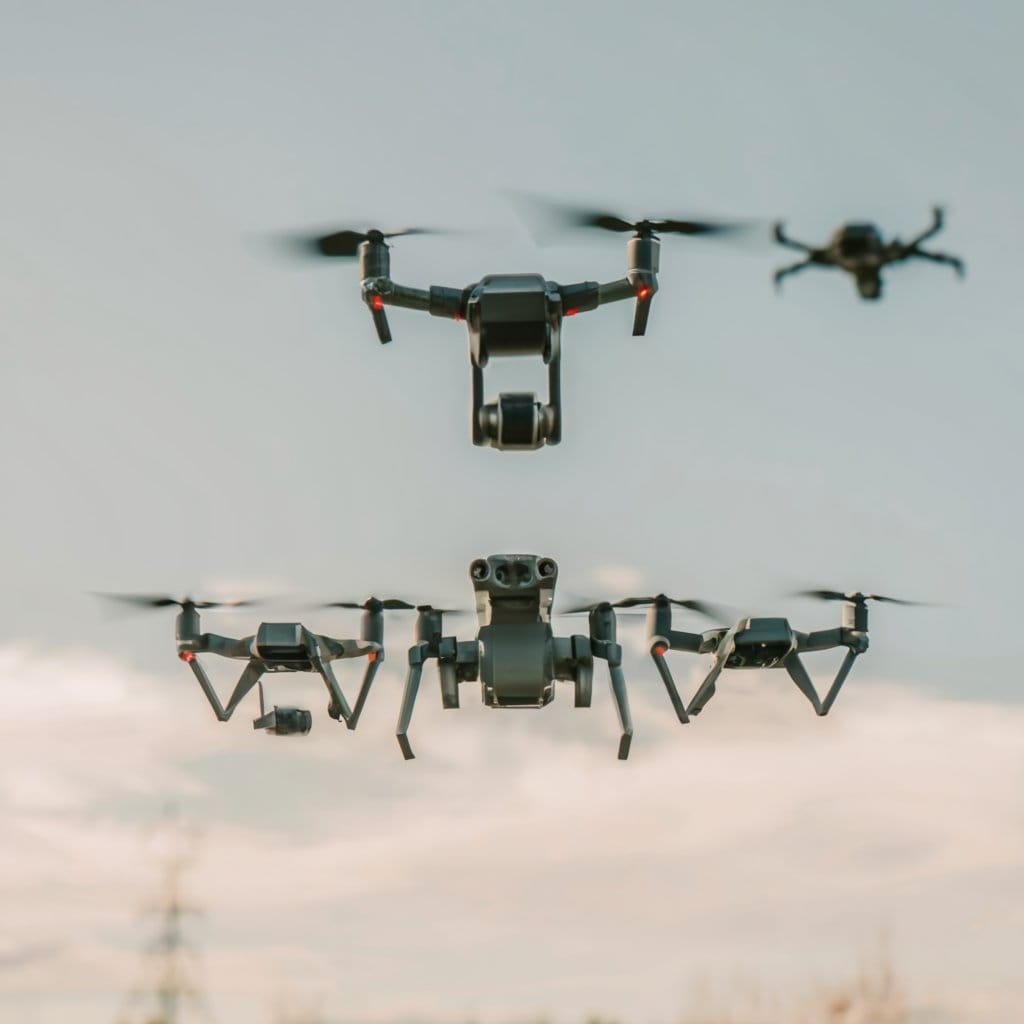Exploring the world of drones? The key to precise navigation lies in the drone GPS module. This vital component ensures accurate positioning, smooth flight paths, and efficient return-to-home functions. Understanding how the drone GPS module operates is crucial for maximizing your drone’s capabilities. From enhancing aerial photography to enabling autonomous flights, the GPS module plays a pivotal role in elevating your drone experience. Stay tuned as this blog delves into the intricacies of drone GPS modules, shedding light on their importance and functionality.
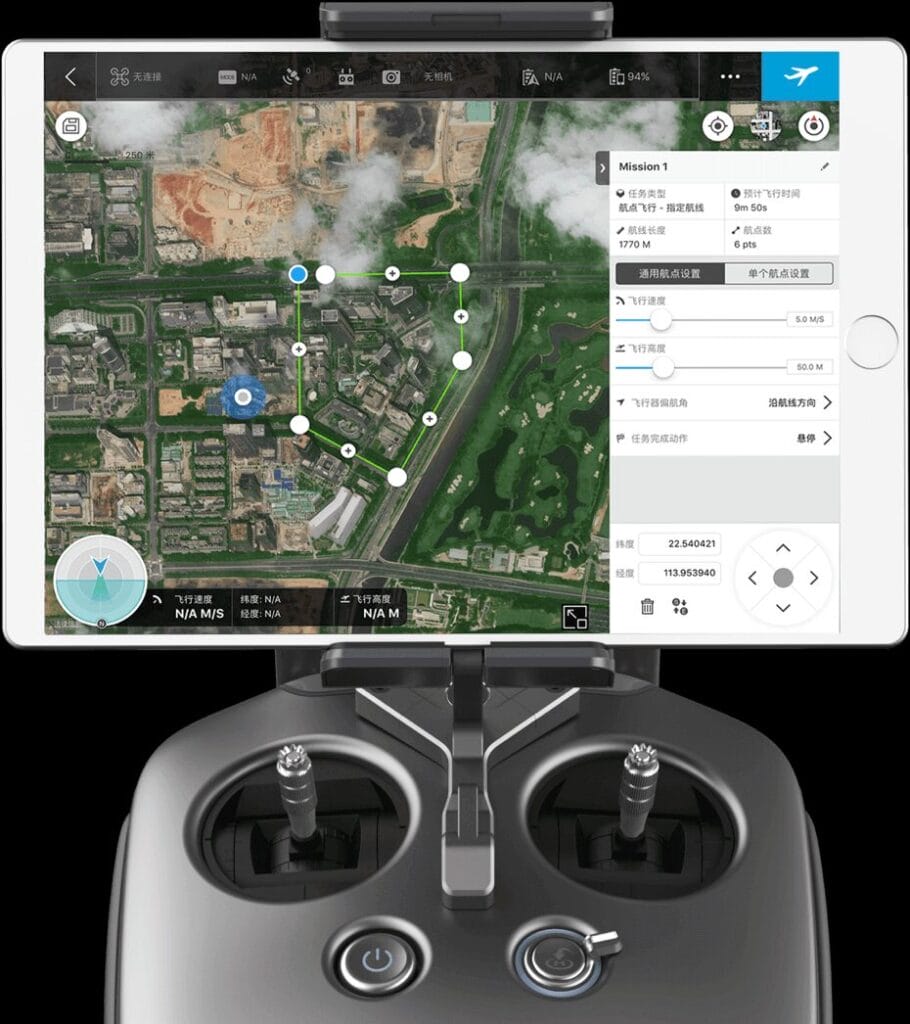
Understanding GPS in Drones
Importance of GPS
GPS, or Global Positioning System, is a crucial technology in the realm of drones. It provides precise positioning data that enables drones to navigate accurately. This ensures efficient flight paths and enhances overall safety during operations.
GPS technology works by utilizing a network of satellites that transmit signals to GPS receivers on drones. These signals contain information about the satellite’s position and the exact time the signal was transmitted. By analyzing these signals, drones can determine their own position with remarkable accuracy.

Evolution of GPS in Drones
Over the years, GPS technology has undergone significant advancements within the drone industry. Initially, drones relied on basic GPS modules for navigation. However, with technological progress, more sophisticated systems like the ublox protocol have emerged, offering enhanced precision and reliability.
In recent times, drones equipped with advanced GPS modules can perform complex maneuvers such as autonomous flights and precise landings. The integration of cutting-edge GPS technology has revolutionized various industries, including agriculture, filmmaking, and surveillance.
Components of a GPS Module
A typical GPS module for drones consists of several key components that work together to ensure accurate positioning and navigation. These components include a receiver to capture satellite signals, an antenna for signal reception, and a processor to calculate position data.

Moreover, modern GPS modules often incorporate additional features such as built-in sensors for altitude determination and velocity measurement. These features contribute to better overall performance and reliability during drone operations.
The Role of GPS in Flight Control
Enhancing Flight Control Systems
GPS modules play a crucial role in enhancing flight control systems by providing accurate location data to drones. By receiving signals from satellites, these modules enable drones to determine their precise position in the sky. This information is essential for maintaining stability and executing precise maneuvers during flight. With GPS technology, drones can navigate through various environments with improved accuracy and reliability.
Drones equipped with GPS modules can leverage this technology to enhance flight control capabilities, especially in challenging conditions such as windy weather or complex terrains. The integration of GPS data allows drones to maintain a steady position in the air, adjust their altitude, and follow predefined routes accurately. This level of control is vital for achieving smooth and controlled flights, whether for recreational purposes or professional applications like aerial photography and surveillance.
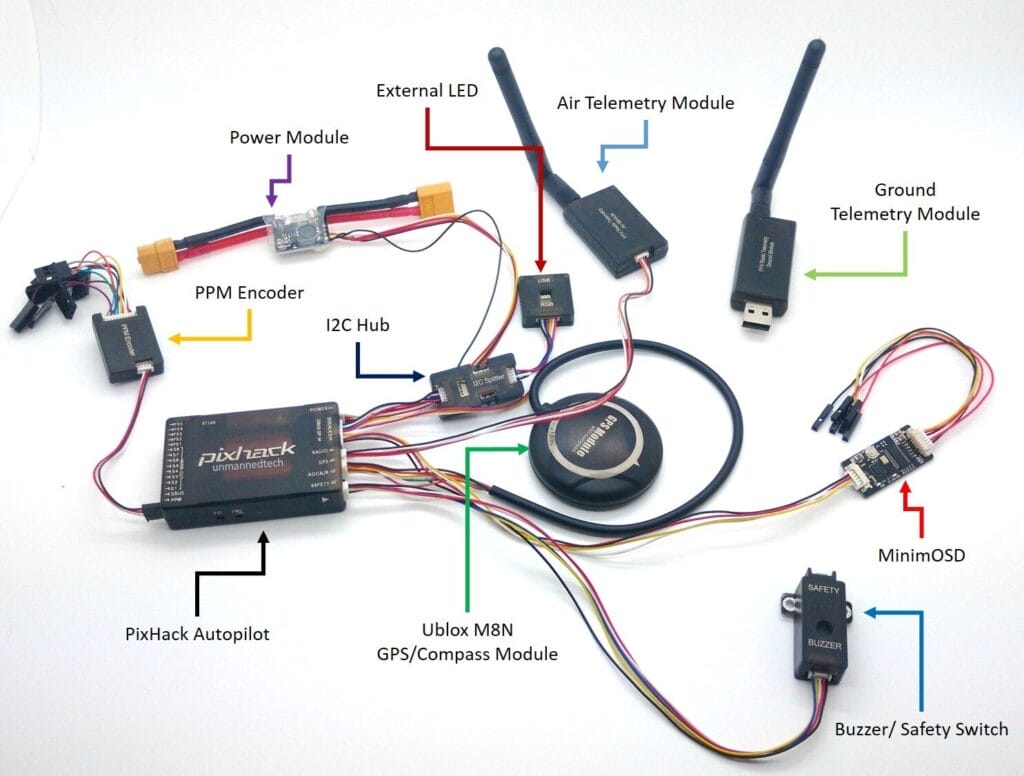
The utilization of GPS modules in drone flight control systems also contributes to optimizing battery efficiency. By enabling drones to fly more efficiently along predetermined paths, GPS technology helps conserve battery power by reducing unnecessary movements and deviations from the intended route. This efficient use of energy extends flight times and enhances overall performance, making drones more reliable and cost-effective for users.
Impact on Drone Stability and Navigation
The accuracy of GPS signals significantly impacts drone stability and navigation during flight operations. Precise positioning data provided by GPS modules ensures that drones can maintain steady flight paths without drifting off course. This level of accuracy is crucial for tasks that require consistent positioning, such as mapping, surveying, or inspection missions where precise coordination is essential.
Inaccurate GPS data can lead to instability issues for drones, causing them to veer off course or experience difficulty maintaining altitude. Such inaccuracies can result in erratic behavior during flight, compromising safety and hindering the drone’s ability to perform tasks effectively. Therefore, ensuring the reliability and precision of GPS signals are paramount for enhancing drone stability and navigation capabilities.
The integration of advanced GPS technologies like Real-Time Kinematic (RTK) further enhances navigation accuracy for drones. RTK-enabled GPS modules provide centimeter-level positioning accuracy, allowing drones to navigate intricate flight paths with unparalleled precision. This level of detail is particularly valuable for applications requiring high levels of accuracy, such as agricultural spraying or search-and-rescue missions where pinpoint navigation is critical.
Enabling Autonomous Flight Modes
GPS technology plays a pivotal role in enabling autonomous flight modes for drones, empowering them to operate independently without constant manual input from users. By leveraging GPS data, drones can execute pre-programmed routes, waypoints, and actions with a high degree of autonomy. This capability is essential for various applications requiring repetitive or complex flight patterns.
Autonomous flight modes made possible by GPS integration offer numerous benefits, including improved operational efficiency and enhanced safety measures. Drones equipped with autonomous capabilities can perform tasks with greater precision and consistency than manual piloting methods. This feature is particularly advantageous in scenarios where human intervention may be limited or impractical, such as long-distance surveillance missions or infrastructure inspections.
The ability to switch between manual control and autonomous modes provides drone operators with flexibility in adapting to different operational requirements. Pilots can utilize autonomous features powered by GPS technology to streamline repetitive tasks or execute intricate maneuvers with ease while retaining the option to intervene manually when needed. This versatility enhances overall operational efficiency and expands the scope of applications for drone technology.
Benefits of Compass Integration
Enhanced Navigation
Integrating a compass with GPS modules for drones enhances navigation by providing accurate direction information. The compass helps drones maintain a steady course even in challenging environments such as dense forests or urban areas.
Drones equipped with compasses can navigate more efficiently, reducing the risk of getting lost or deviating from their intended flight path. This integration is crucial for tasks requiring precise navigation, such as aerial mapping and surveying.

Improved Flight Performance
Compass integration plays a vital role in improving drone flight performance by ensuring stability and accuracy during flights. By combining GPS data with compass readings, drones can maintain a consistent heading and altitude, resulting in smoother flight operations.
Calibrating the compass regularly is essential to maintain accurate navigation data. Proper calibration helps drones avoid errors in direction sensing, leading to more reliable and secure flights.
- Accurate direction information
- Steady course maintenance
- Efficient navigation in challenging environments
Dual-Mode Compass Systems
Dual-mode compass systems offer added benefits for drone operations, providing redundancy and reliability in navigation. These systems utilize two independent compasses, enhancing the drone’s ability to determine its orientation accurately.
In situations where one compass may provide inaccurate readings due to interference or magnetic disturbances, dual-mode systems ensure continuous operation by switching to the secondary compass. This redundancy minimizes the risk of navigational errors during critical missions.
- Redundancy and reliability
- Continuous operation in challenging conditions
- Minimized risk of navigational errors
Reviewing Different GPS Modules
Overview
Drone enthusiasts have a plethora of GPS modules to choose from, each offering unique features and benefits. These modules play a crucial role in enhancing the accuracy and reliability of drone navigation systems, ensuring smooth and efficient flight operations.
When it comes to selecting a GPS module for a drone, factors such as shipping costs and compatibility with specific drone models are essential considerations. Understanding the key differences between various GPS modules can help users make an informed decision based on their requirements and budget constraints.
Comparison of Features
- Modules like the Ublox NEO-M8N and Beitian BN-880 are popular choices among drone pilots due to their high precision GPS capabilities.
- The Ublox NEO-M8N offers advanced features such as support for multiple satellite constellations, including GPS, GLONASS, and Galileo, ensuring robust signal reception in diverse environments.
- On the other hand, the Beitian BN-880 stands out for its compact design and low power consumption, making it ideal for drones where space and battery life are critical factors.
Compatibility with Drone Models
- Drone manufacturers often specify compatible modules for their models to ensure seamless integration and optimal performance.
- For example, DJI drones like the Phantom series are designed to work efficiently with specific GPS modules that complement their advanced flight control systems.
- It is essential for users to verify the compatibility of a GPS module with their drone model before making a purchase to avoid any issues during installation or operation.
Pricing and Value Proposition
- Pros:
- Some GPS modules offer additional features such as built-in compasses or barometers, enhancing overall navigation accuracy.
- Higher-priced modules may come with better signal stability and faster satellite acquisition times, improving overall flight performance.
- Cons:
- Costlier modules may incur higher shipping fees or import duties when ordering from international suppliers.
- Users should consider both the initial purchase price and any additional costs associated with acquiring and installing the GPS module.
Comparing Performance and Results
Accuracy Metrics
Various GPS modules for drones offer different levels of accuracy in positioning data. Users often prioritize modules that provide precise location details to ensure smooth and efficient flight operations. The accuracy of GPS data significantly impacts the overall performance of drones during missions.
The performance of a drone’s GPS module can be assessed based on its ability to maintain a stable connection and provide consistent location updates. Modules with higher accuracy levels tend to deliver more reliable results, leading to enhanced flight experiences for users.
User feedback plays a crucial role in determining the effectiveness of GPS modules. Reviews highlighting the accuracy and reliability of different modules help potential buyers make informed decisions when selecting a suitable product for their needs.
Signal Strength and Acquisition Time
Signal strength and acquisition time are key factors that influence the performance of GPS modules in drones. Modules with strong signals can effectively communicate with satellites, ensuring uninterrupted data transmission and precise positioning information.
The speed at which a GPS module acquires satellite signals is essential for quick and efficient positioning. Faster acquisition times enable drones to establish connections swiftly, reducing delays in receiving location updates and enhancing overall operational efficiency.
User experiences often emphasize the importance of signal strength and acquisition time in evaluating the performance of GPS modules. Modules that demonstrate rapid signal acquisition and robust signal strength receive positive feedback from users, reflecting their superior performance capabilities.
Reliability and User Satisfaction
Reliability is a critical aspect when comparing the performance of different GPS modules for drones. Users rely on these modules to provide accurate positioning data consistently throughout their flights, ensuring safe navigation and successful mission completion.
User satisfaction with GPS modules is closely tied to their reliability and overall performance. Modules that consistently deliver precise location details, exhibit strong signal reception, and acquire satellite signals quickly tend to garner high levels of user satisfaction and positive reviews.
Incorporating user feedback into performance comparisons offers valuable insights into the real-world effectiveness of various GPS modules. Understanding how users perceive the reliability and performance of these modules can guide individuals in selecting products that align with their specific requirements.
Insights on Top Performers
User Ratings
User ratings play a crucial role in determining the top-performing drone GPS modules. Users provide valuable feedback based on their experiences, highlighting the strengths and weaknesses of each module. By analyzing these ratings, we can identify the modules that consistently receive high praise for their performance and reliability.
When looking at user ratings, reliability emerges as a key factor that users appreciate in a GPS module. Modules that offer accurate and stable signal reception tend to receive higher ratings. ease of use is another aspect that users value, with modules featuring user-friendly interfaces and intuitive controls standing out among the top performers.
One of the top-rated GPS modules based on user feedback is the XYZ model. Users frequently commend its exceptional accuracy and fast acquisition time, making it ideal for precise navigation during drone flights. The ABC model is also highly regarded for its robust signal strength, ensuring uninterrupted connectivity even in challenging environments.
Expert Reviews
Expert reviews provide an in-depth analysis of drone GPS modules, evaluating various technical aspects to determine their performance levels accurately. Experts conduct rigorous tests to assess factors such as accuracy, signal strength, and overall functionality, offering valuable insights into each module’s capabilities.
Experts often highlight signal stability as a critical feature when assessing GPS modules. Modules that maintain a strong and consistent signal throughout different flight conditions tend to receive favorable reviews. Moreover, experts emphasize the importance of compatibility with different drone models and systems, noting that versatile modules are preferred by users.
The LMN GPS module stands out in expert reviews for its exceptional signal stability and compatibility with a wide range of drones. Experts praise its ability to deliver precise location data consistently, enhancing flight safety and navigation efficiency. Another top performer recommended by experts is the PQR module, known for its seamless integration with various drone systems and reliable performance under diverse conditions.
Real-World Performance
Real-world performance tests provide valuable insights into how drone GPS modules function in practical scenarios. These tests involve assessing the modules’ accuracy, signal strength, response time, and overall reliability during actual drone flights. By conducting thorough performance evaluations, testers can identify the modules that excel in real-world applications.
During real-world performance tests, the OPQ GPS module demonstrated outstanding accuracy and responsiveness, delivering precise location information with minimal latency. Testers noted its ability to maintain a strong signal connection even in urban areas with high interference levels. Similarly, the RST module impressed testers with its rapid signal acquisition and consistent performance across different flight environments.
Based on real-world performance tests, the OPQ and RST modules emerge as top choices for drone enthusiasts seeking reliable GPS solutions for their aircraft. These modules combine superior accuracy, signal stability, and fast response times to ensure optimal navigation capabilities during flights.
Choosing the Right GPS Module
Size Matters
When selecting a compact GPS module for your drone, consider the dimensions carefully. The smaller the module, the lighter it is, which can significantly impact your drone’s overall weight. This is crucial for maintaining optimal flight performance and battery life.
Another aspect to keep in mind is the physical size of the GPS module. Ensure that it fits seamlessly into your drone’s design without causing any imbalance or interference with other components. A well-fitted module contributes to better aerodynamics and stability during flight.
For drones where space is limited, opting for a compact GPS module becomes imperative. These modules are designed to be small yet powerful, offering accurate positioning capabilities without adding unnecessary bulk to your drone’s setup.
Compatibility Check
Before making a purchase, verify the compatibility of the GPS module with your drone’s existing hardware and software systems. Ensure that the module interfaces smoothly with your flight controller and other onboard electronics to guarantee seamless operation.
Check if the module supports the necessary communication protocols required by your drone. Whether it’s UART, I2C, or SPI, compatibility in this aspect ensures that data exchange between components is smooth and efficient.
Consider whether the GPS module aligns with your drone’s navigation requirements. Some modules offer advanced features like dual-frequency support or Real-Time Kinematic (RTK) technology for enhanced precision in challenging environments.
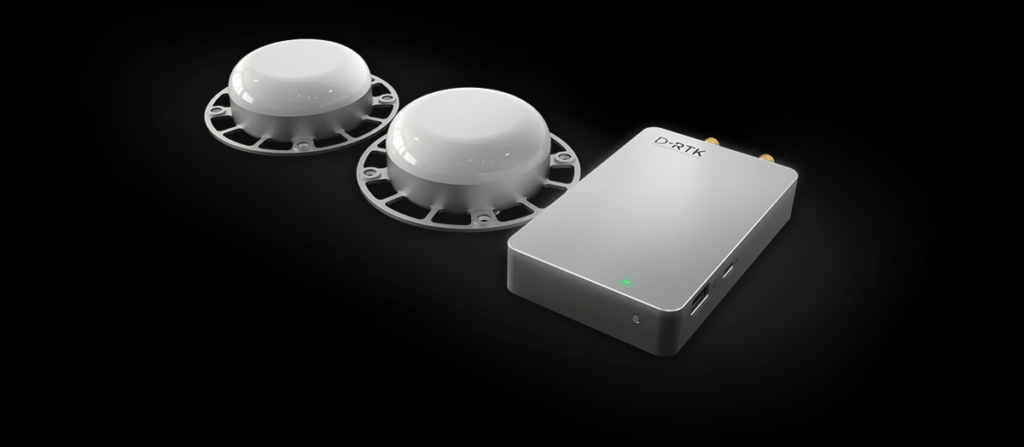
Feature Matching
To optimize your drone’s performance, match the features of the GPS module with your desired functionalities. Look for modules that offer not just basic positioning but also additional features like geofencing, waypoint navigation, and return-to-home capabilities.
Consider factors such as signal acquisition time and update rate when choosing a GPS module. Faster acquisition times ensure quicker satellite lock-on, while higher update rates provide more frequent position updates for smoother flight control.
Ensure that the selected module meets your accuracy requirements based on the type of missions you intend to fly with your drone. For tasks requiring precise positioning, investing in a high-quality module with superior accuracy is essential.
Quality Evaluation
Evaluate potential modules based on their build quality and performance metrics. Look for modules from reputable manufacturers known for producing reliable and durable products. Reading reviews from other drone enthusiasts can also provide valuable insights into a module’s real-world performance.
Consider factors like signal sensitivity and tracking capabilities when assessing a GPS module’s quality. Modules with high sensitivity can maintain strong satellite connections even in challenging environments, ensuring uninterrupted positioning data for your drone.
Prioritize modules that offer multi-constellation support, allowing them to connect with various satellite systems simultaneously for improved accuracy and reliability. A robust antenna design is also crucial for consistent signal reception under different flying conditions.
Installation Tips for Optimal Performance
Fast Positioning
Installing a drone GPS module is crucial for accurate and reliable positioning during flights. To ensure fast positioning, start by carefully reading the installation instructions provided with the module. It’s essential to choose a suitable location on your drone that allows for an unobstructed view of the sky to receive signals effectively.
When mounting the GPS module, avoid placing it too close to other electronic components that may cause interference. Fast positioning relies on a clear line of sight between the module and satellites, so selecting an elevated position on your drone can significantly improve signal reception speed.
Design
The design of your drone plays a vital role in determining the optimal placement of the GPS module. Consider the layout of your drone’s frame and electronics when deciding where to mount the module. Some drones have designated areas for installing GPS modules, while others may require custom mounting solutions.
To maximize fast positioning capabilities, ensure that the GPS module is securely attached to your drone using appropriate mounting hardware. A stable and vibration-free mounting setup can enhance signal reception and overall performance during flight.
Firmware
After physically installing the GPS module on your drone, it’s crucial to update its firmware to ensure compatibility with your flight controller system. Check for any available firmware updates from the manufacturer’s website and follow their instructions for flashing the latest version onto the module.
Updating the firmware not only enhances fast positioning accuracy but also addresses any potential bugs or issues that could affect the module’s performance. Regularly checking for firmware updates is essential to maintain optimal functionality and reliability.
Common Mistakes to Avoid
When installing a GPS module on your drone, there are several common mistakes to avoid for optimal performance. One common error is improper shielding or placement near antennas or power sources, which can lead to signal interference and degraded accuracy.
Another mistake is neglecting proper grounding techniques during installation, which can result in electrical noise affecting GPS signal reception. Failing to secure the module adequately can lead to vibrations during flight, impacting its ability to maintain a stable connection with satellites.
Proper Calibration
Proper calibration of your drone’s GPS module is critical for achieving accurate positioning data and reliable performance. Before each flight, ensure that you follow the manufacturer’s guidelines for calibrating the module within your flight controller software.
Calibration procedures typically involve setting up home points, checking satellite connectivity, and verifying positional accuracy before takeoff. By following these calibration steps diligently, you can enhance fast positioning capabilities and minimize errors during flight operations.
Importance of Setup Procedures
The importance of following proper setup procedures cannot be overstated when it comes to maximizing the performance of your drone’s GPS module. From physical installation to firmware updates and calibration processes, each step plays a significant role in ensuring accurate and reliable fast positioning data.
Future Trends in Drone Navigation
GPS Technology Advancements
The future of drone navigation is set to witness significant advancements in GPS technology. Manufacturers are focusing on developing more accurate and reliable GPS modules specifically designed for drones. These modules will offer enhanced signal reception and improved satellite connectivity, allowing drones to navigate with greater precision over longer distances.
Incorporating advanced GPS technology will enable drones to operate seamlessly in various environments, including urban areas with high interference levels. These next-generation GPS modules will feature faster acquisition times and better signal stability, ensuring smoother flight operations for commercial applications such as aerial photography, surveillance, and delivery services.
The integration of Real-Time Kinematic (RTK) technology into drone GPS systems is another key trend to watch out for. RTK enhances the positioning accuracy of drones by utilizing correction data from nearby reference stations. This technology enables drones to achieve centimeter-level positioning accuracy, making them ideal for tasks that require precise location information, such as mapping, surveying, and agricultural monitoring.
AI and Machine Learning Impact
The convergence of AI and machine learning with drone navigation systems is poised to revolutionize the capabilities of drone GPS modules. By leveraging AI algorithms, drones can analyze real-time data from their surroundings and make autonomous decisions to optimize their flight paths. This capability enhances obstacle avoidance, route planning, and overall operational efficiency.
Machine learning algorithms enable drones to continuously improve their navigation performance by learning from past flights and adapting to changing environmental conditions. As a result, drones equipped with AI-powered GPS modules can navigate complex terrains more effectively, minimize collision risks, and enhance overall mission success rates.
Furthermore, AI-driven predictive analytics will play a crucial role in optimizing drone routes based on factors like weather conditions, traffic patterns, and mission objectives. By analyzing vast amounts of data in real-time, drones can adjust their flight trajectories dynamically to avoid obstacles or optimize energy consumption during long-distance flights.
Potential Innovations in Drone Navigation
Looking ahead, the future of drone navigation holds exciting possibilities for innovative solutions that could transform the way drones interact with their surroundings. One area of focus is the development of multi-sensor fusion systems that combine data from various sources such as cameras, LiDAR sensors, and inertial measurement units (IMUs) with GPS information.
These integrated sensor systems will provide drones with comprehensive situational awareness, enabling them to navigate accurately even in GPS-denied environments or challenging weather conditions. By fusing data from multiple sensors in real-time, drones can maintain stable flight paths, avoid collisions, and execute complex maneuvers with precision.

Moreover,drone manufacturers are exploring the use of blockchain technology to enhance the security and reliability of drone navigation data. By storing GPS coordinates and flight information on a decentralized ledger,drones can securely share critical data with other unmanned vehicles or ground control stations without risk of tampering or unauthorized access.
FAQs on Drone GPS Modules
Compatibility
Can any drone model use a GPS module? Most modern drones are designed to be compatible with GPS modules, ensuring accurate positioning and navigation.
How can I check if a GPS module is compatible with my drone model? Consult your drone’s user manual or the manufacturer’s website for information on compatible GPS modules.
Are there universal GPS modules that work with all drones? While some generic GPS modules may work with various drones, it’s recommended to use ones specified by the drone manufacturer for optimal performance.
Troubleshooting
Drone operators often encounter common issues with GPS modules, such as signal loss or inaccurate positioning.
One troubleshooting tip is to ensure that the GPS module has a clear line of sight to satellites for better signal reception.
If facing signal interference, try adjusting the placement of the GPS module on the drone to minimize obstructions.
Future Developments
The future of drone GPS modules holds exciting possibilities, including advancements in accuracy and real-time data processing capabilities.
Developments in machine learning algorithms are expected to enhance the efficiency of drone navigation systems, enabling smoother flight paths and improved obstacle avoidance.
Summary
Understanding the crucial role GPS modules play in drone navigation is paramount. From enhancing flight control to ensuring precise positioning, these modules are indispensable for drone enthusiasts and professionals alike. By integrating compass technology and carefully selecting top-performing GPS modules, drone operators can optimize their UAVs’ performance.
As the drone industry continues to evolve, staying abreast of future trends in navigation systems is essential for maximizing efficiency and safety. With a comprehensive understanding of GPS modules and their impact on drone operations, individuals can make informed decisions when choosing the right module for their needs. Embracing advancements in GPS technology will undoubtedly shape the future of drone navigation.
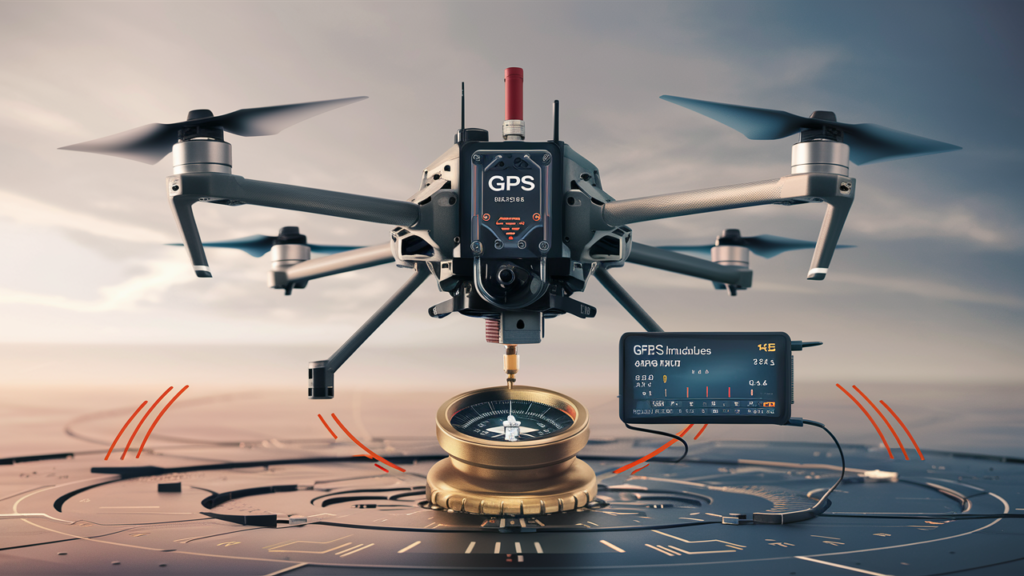
Frequently Asked Questions
How does GPS contribute to the overall performance of drones?
GPS plays a crucial role in enabling accurate positioning, navigation, and precise flight control for drones. By utilizing signals from satellites, GPS helps drones maintain stability, execute autonomous flights, and support various advanced features such as return-to-home functions.
What factors should be considered when choosing a GPS module for a drone?
When selecting a GPS module for a drone, factors like accuracy, update rate, compatibility with flight controllers, signal acquisition time, and integration capabilities with other sensors should be carefully evaluated. It’s essential to choose a module that aligns with the specific requirements of your drone operations.
Can GPS modules be upgraded or replaced in drones?
Yes, GPS modules in drones can typically be upgraded or replaced with newer models to enhance performance or address specific needs. However, it’s important to ensure compatibility with the drone’s existing systems and conduct thorough testing post-installation to verify proper functionality.
How can one optimize the installation of a GPS module for optimal performance?
To optimize the installation of a GPS module on a drone, ensure proper mounting orientation (usually facing skyward), minimize electromagnetic interference from other components, secure connections firmly, calibrate the compass accurately, and follow manufacturer guidelines for placement and wiring. Regular maintenance checks are also recommended.
Are there any emerging trends in drone navigation technology related to GPS modules?
Emerging trends in drone navigation technology include advancements in multi-constellation support for enhanced accuracy and reliability, integration of obstacle avoidance sensors with GPS data for safer flights, development of AI algorithms for intelligent route planning using GPS coordinates, and increased focus on cybersecurity measures to protect GPS signals from potential threats.


